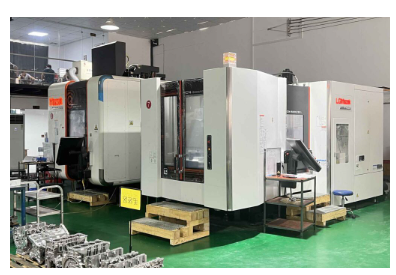Speeding up the Prototype Turnaround
High Speed Prototyping: The biggest benefit of 3D printing for sand casting is its ability to slash the time required to develop a prototype. Historically, a significant lead time to produce molds and cores for sand casting, taking up to several weeks. In contrast to 3D printing that takes very little time to produce these components – in some cases, hours or days. Companies that utilize 3D printing have, for instance, boasted of reductions in lead times as high as 70 percent over traditional means. Because of this quick turnaround time, the iteration can be done much more quickly with iterative and dynamic test phases, effectively accelerating the overall product development cycle.
Enabling Complex Designs
Conventional sand casting techniques do not offer the level of design flexibility that 3D printing can provide. 3D printing enables designers to break free of the limitations of conventional mold-making processes and produces much more complex and intricate geometries. That allows for very difficult and expensive to cast features like undercuts, internal channels, and hollow spaces, to be now effortlessly created and at no extra cost. With the capability to print intricate designs directly using CAD data, it also limits human error and guarantees the design is preserved through manufacturing.
Improving Accuracy and Reducing Scrap
Significantly Improved Accuracy: The accuracy of sand-casted parts can be greatly improved due to 3D printing technology. 3D printers are able to achieve very high resolution with layer heights being able to be less than 0.1mm thin, even the smallest detail from the original design will be represented with accuracy. This accuracy in turn means much less machining and finishing is needed, saving both time and material. 3D printing is more sustainable due to being an additive process (brings parts to life layer by layer), which naturally results in less material waste than with subtractive manufacturing, making it more cost-effective and eco-friendlier.

Low-Volume Production with Cost Efficiency
The advantage of 3D printing, especially in low volume and personalized parts. On the one hand, traditional sand casting can become less cost-effective with smaller quantities because mold setup can be expensive. On the other hand, 3D printing only requires expensive blanking tools to be installed once, dramatically reducing the cost of producing a small amount of parts or even custom products. This is especially beneficial for aerospace and automotive industries who constantly require small lot and quick turnaround parts.
Improving Sustainability
There is a growing body of interest in the sustainability of manufacturing in the context of the increasing environmental impact of manufacturing, and 3D printing plays a role in this aspect due to these further capabilities for sustainability in the sand casting process. The reduced material waste along with a possibility to recycle the sand that is used in the printing process results in a reduced ecological footprint of production. In addition, 3D-printing of sand molds for example usually requires less energy compared to typical mold-making, which contributes to sustainability, too.
Dive into more Advanced 3D-Printing Applications
To learn more about the ways 3D printing is changing the future of the sand casting world, check out 3D printing for sand casting.
Final Insights
But 3D printing is on the way to change the way they produce by not upgrading sand casting but by replacing it, and not just to better it, but to revolutionise it. 3 3D printing is thus in line with the demands of the current era of manufacturing needs — quick to produce, ability to produce complex geometries, low waste, and lower costs. As this technology matures and becomes embedded in conventional foundry practices, it stands to offer unprecedented pathways toward new design opportunities, production efficiencies, and environmental stewardship.
